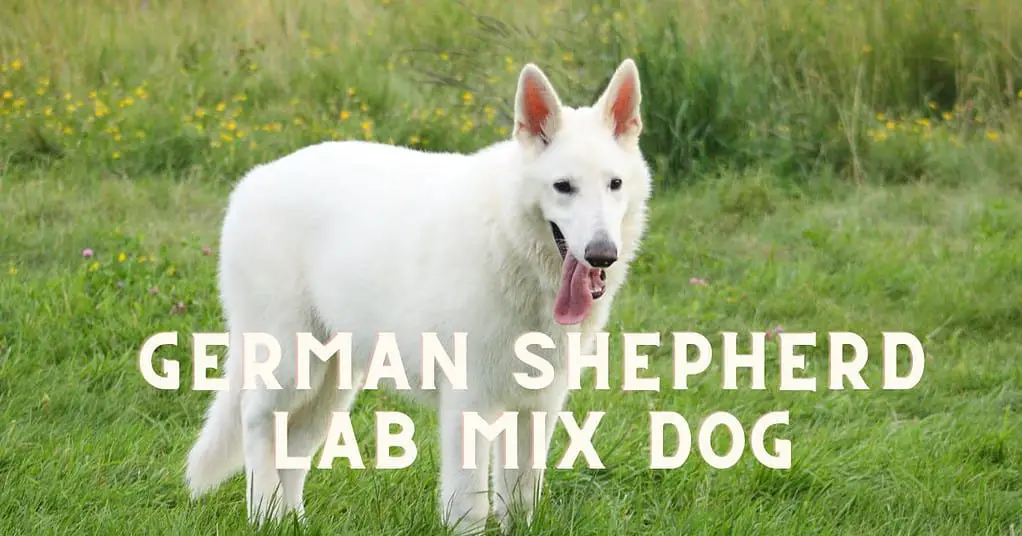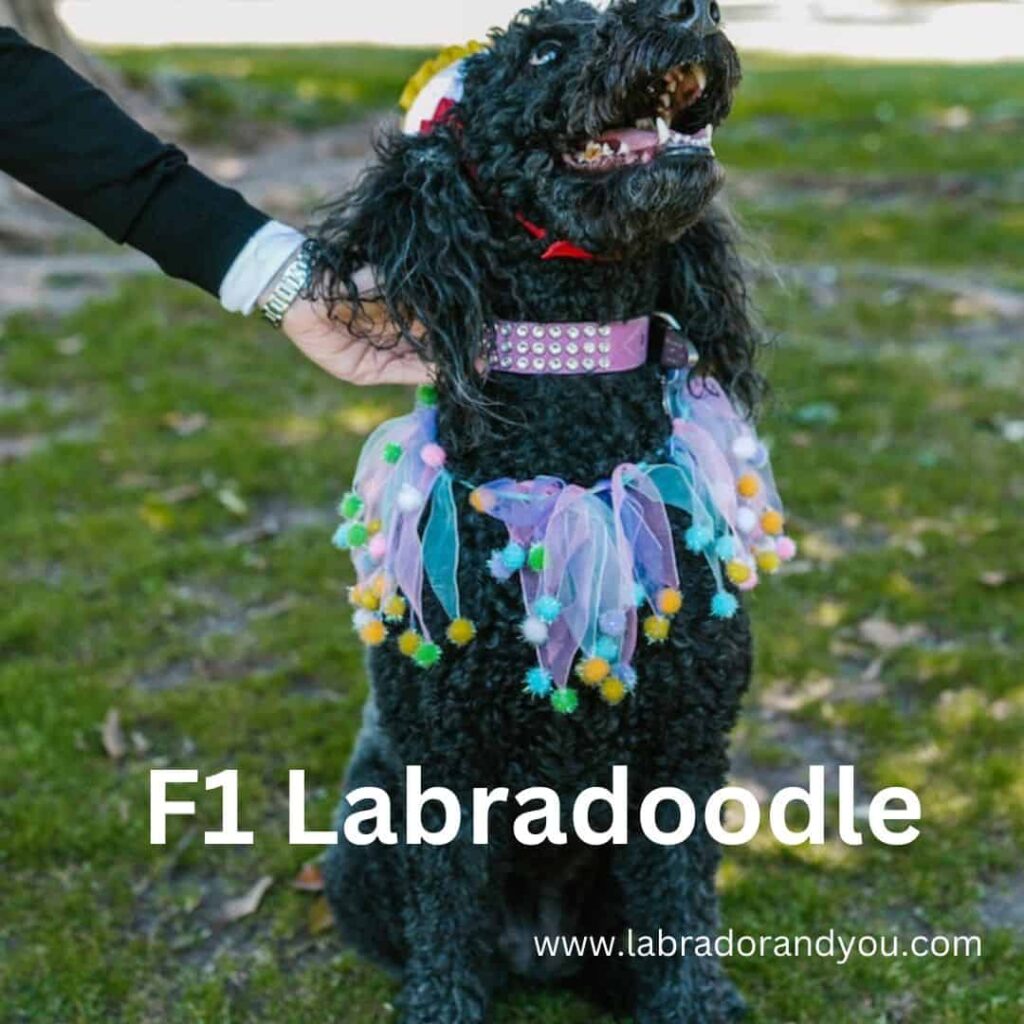Lab Terrier Mix is a dynamic blend of the Labrador Retriever and various spirited Terrier breeds. These medium-sized, affectionate companions present a delightful mix of traits, offering an ideal balance between the Lab and the Terrier.
Despite their sometimes stubborn streak, these hybrids are known for their attentive nature. They are an excellent match for families with children. Their inherent social skills make them adaptable companions, albeit with a tendency to develop separation anxiety if left alone.
What Is A Lab Terrier Mix?
A cross between a terrier and a labrador retriever parent produces a lab terrier. While labrador is a specific breed, terrier refers to an entire group of dog breeds. There are 31 recognized terrier breeds by American Kennel Club (AKC). Therefore, determining the mix, in particular, is challenging. Both are popular in the United States.
Lab’s loving temperament and the terrier’s feisty personality are a match. A labrador retriever is an intelligent dog with high energy, sociable, sweet-natured, and a people pleaser. Terriers are spirited, vocal, and love to dig. So, what happens when these get mixed?
The litter can inhibit any personality traits from the parents and their style. Take a look below at different terrier group mixes for a better understanding.
8 Top Lab Terrier Mix Dogs
Love for hybrid dogs has doubled in the last decade. It began with poodle mixes like yorkie poo and maltipoo. Any dog combination is possible today. Here are some of the most popular breeds of lab terrier mixes.
American Staffordshire Terrier Lab Mix
- American Staffordshire terrier lab mix is a medium-sized, sturdy, intelligent pooch.
- Also known as Labrastaff, they demand extensive daily exercise and early socialization.
- This terrier mix is attractive with a stocky front and lean backside.
- Be aware of heart diseases and hip dysplasia in their case.
- They have a 12-15 years lifespan and are about 17 to 19 inches in height.
- Their average weight is 40-70 lbs.
- They go well with children and pets and are loyal to their families.

Jack Russell Terrier Lab Mix
- The height of Jack Russell lab is 16 to 20 inches, and the weight is 25 to 50 lbs.
- One of the most popular dog, it is available in black, brown, and cream colors.
- They are friendly and intelligent and live about 10-14 years.
- Jackadors have inherited hunting traits and instincts from both parent breeds.
- They are easy to groom. Brushing once a week and bathing when required is alright.
Bull Terrier Lab Mix
- The bull terrier lab is muscular, energetic, playful, and a good dog.
- The crossbreed will likely inherit the bull terrier’s egg-shaped head.
- They have a dense and short coat. It varies in color.
- Be prepared for moderate to heavy shedding.

The Scottish Terrier Lab Mix
- The traits of this mixed breed are independence, outgoing, spiritedness, and cleverness.
- The average weight is 22-50 pounds, and they live about 10-13 years.
- They are loyal and become attached to the family in no time.
- They are prone to obesity, ear infection, elbow dysplasia, hip dysplasia, cataracts, hypothyroidism, bladder stones, bladder cancer, hemophilia, deafness, Cushing’s disease, etc.

The Lab’aire
- It is a mix between the lab and Airedale terrier.
- Their average lifespan is 10-14 years.
- They are friendly, happy, enthusiastic, and independent.
- They have an average weight of 50-70 pounds.
- Health conditions they are prone to – include atopic dermatitis, obesity, bloat, heart diseases, ear infection, and hip and elbow dysplasia.
- They are self-independent and entertain themselves.

Rat Terrier Lab Mix
- Rat terrier labs are excellent with families.
- They weigh between 25 and 60 pounds.
- Their average lifespan is 10-18 years.
- Feisty, energetic, loving, friendly, and inquisitive can be used to describe them.
- Cardiac disorders, eye issues, patellar luxation, obesity, ear problems, legg-calve-perthes, etc., are common health issues.

Fox Terrier Lab Mix
- A labrador retriever and fox terrier mix are friendly and intelligent.
- They live for 10 to 15 years.
- The average weight is between 18 and 80 pounds.
- They may be more compact than other lab terrier dogs.
- They are family clowns and can be funny.
- Cataracts, lens luxation, distichiasis, legg-perthes disease, patellar luxation, obesity, and elbow and hip dysplasia are common health concerns.

Border Terrier Lab Mix
- The labrador retriever and border terrier mix can range in size.
- They weigh between 11.5 and 80 pounds.
- The average lifespan is 10-15 years.
- Their temperament is funny, stubborn, family-oriented, and happy.
- Perthes disease, CECS, seizures, cataracts, heart defects, obesity, ear infection, bloat, hip and elbow dysplasia, etc., are common health concerns.

What You Should Know About The Crossbreed Controversy?
Hybrid, designer dog, and crossbreed are popular terms for these mixed dogs. These offsprings result directly from two purebred parents. Different generations of cross-breeding determine dog predictability. A responsible breeder worked to create a mixed breed earlier.
A dog can take years and generations of crossbreeding to be considered purebred. Previously, first, second, and third-generation crossbreeds weren’t sold. Today, hybrid dogs are common, and any combination is possible. Also, Lab terriers are among one and are spirited and sweet.
Lab Terrier Mix: Complete Overview
The traits of this designer dog can vary. Here is a complete overview to help you know the lab terrier better.
lab terrier mix size
From border terriers to American pitbull terriers, they are a diversified group. Hence, predicting a particular terrier lab mix size can be challenging.
The size significantly depends on the terrier that was mixed with the lab. For example, rat terrier lab mixes are 10-15 lbs in weight and 10-13 inches in height. In contrast, the American pit bull terrier mix weighs about 90 lbs and is 24 inches tall.
Appearance
The appearance depends on the particular terrier breed involved. However, it is an average-sized dog. A male lab mixed with a terrier is heavier than a female. They have solid or bi-colored fur.
The mix will have a longer muzzle than the terrier parent breed. Their smiley face and brown eyes are key characteristics. They have long and straight legs with round paws. Their tails are low away from the body, and they are medium-sized dogs.

Temperament
Loving and loyal are the best terms to describe their temperament. It is highly credited to the lab genes. While labs gift them their affectionate nature, protectiveness is inhibited from the terrier ancestors.
Meaning they can be excellent guard dogs. It is a good reason to bring them home. Remember, there is no temperament guarantee regarding mixed dogs. You must be acceptable with each temperament and training requirement coming with the mixed breed dog.
Coat
Yellow, black, and chocolate are standard Labrador Retriever colors. But terriers come in ample variety. It means the mixed dog can take any color from their terrier parent. For example, pitbull lab mixes can be white, black, tan, brindle, etc. In comparison, American Staffordshire mixes can be brown, brindle, or black.
Exercise
Terriers are a feisty breed, and labs are active. The combination results in an energetic terrier lab mix puppy.
- A daily exercise of one hour is essential.
- Intense physical exercises like a fetch game, hiking, or a leisurely walk on the beach can benefit.
- Be prepared for lots of exercise with a lab terrier at home.
Training
Training can be challenging since this hybrid dog is naturally playful and intelligent. They are eager to learn, which makes them highly active dogs.
Training early is a good idea to prevent destructive behavior when old. While positive reinforcement is excellent, treat them adequately to avoid obesity. They appreciate physical challenges, and more exercise can make training easy.
Socializing is an essential part of their training and helps in good behavior. Ensure a park or daycare visit for it.

Diet
A healthy and nutritious diet is necessary for growth. A protein-rich diet seems appropriate for their activeness. Remember, overfeeding can lead to obesity. Stick to the manufacturer-recommended portions for safety.
Shedding
They shed moderately heavy and are a no if you want a hypoallergenic dog. Their coats are straight and dense, with medium-length hair. The parents of the mix are opposite regarding shedding. Hence, the shedding depends on the inherited trait.
Grooming
Their easy-to-maintain coats do not ask for frequent baths. Unless they have dirtied themselves, bathing every quarter is alright.
- A quick brush once a week is all that they need.
- Keeping a check on their nails and ears is among the most important things.
- Use a soft and damp cloth to wipe the ears.
- Teach them brushing teeth from a young age for appropriate dental care.
how long do lab terrier mix live?
lab terrier mix lifespan
The average life expectancy of a lab terrier mix is 12.5 years. Most terrier mixes have a lifespan of 12 to 14 years. They can even make it 14 years or beyond without major health problems. Here are a few conditions that may impact their life span.
Allergies
Most terriers can easily catch an allergy. Their immune system perceives common substances as toxic, resulting in an extreme reaction.
The digestive system, skin, and respiration are impacted the most. Allergies are common in terriers and can get passed on to the designer dog.
Eye Problems
Progressive Retinal Atrophy and cataracts are common eye concerns. The labradors are prone to eye issues and can pass it on to the mixed offspring. PRA can even turn dogs blind.
Joint Problems
Patellar luxation, elbow, and hip dysplasia are highly risked in labradors. They can affect the lab terrier mix breeds.
Osteochondritis Dissecans
It can be referred to as a condition that prevents cartilage from turning into bones in the pup’s skeleton. It is prominent in labradors and results in lameness and swollen joints. Hence, the terrier lab mix can be at risk. The best way to avoid these things is to ensure parents screening before breeding. It will help detect genetic health problems if any.

are lab terrier mixes good dogs?
If you are confused about whether to go for a lab terrier mix or not, here are a few considerations. Take a closer look at why you shouldn’t and should get a lab terrier cross.
Why You Shouldn’t Get A Labrador Terrier Cross?
- The hybrid dogs have both active parents. The designer pup will likely inherit similar traits. Inadequate exercise can put them at risk of several diseases if you cannot meet their high exercise requirement, time to rethink.
- Lab terriers love to eat, resulting in obesity risk. However, appropriate exercise can help prevent it. Not paying attention will lead to increased health issues.
- Lab terriers like being around their owners. They do not want to get bored . Leaving them alone for a long can lead to separation anxiety and destructive behavior.
Why You Should Get A terrier lab?
- Lab terriers are intelligent dogs and easily trainable. They received the trait from both parents. And is an ideal option for first-time dog owners.
- Their maintenance requirement stretches from low to moderate. The designer dog is not a shedder. Occasional or weekly brushing is sufficient for the upkeep.
- Lab terrier’s social skills are commendable. They have no issues blending with other people, dogs, or pets. Early age socialization is key in ensuring it.
How to Choose the Right Lab Terrier Mix for You?
Mix breeds can sometimes get unpredictable. Hence, first, get satisfied with the parent breeds. Hence, researching a bit in this area is crucial. The hybrid variation is a consequence of the chosen terrier parent.
No matter where you find your Lab Terrier mix, be sure to do your research and meet the dog in person before you adopt or purchase them. With some planning, you can find the perfect Lab Terrier mix to join your family. Here are some additional tips for choosing the right Lab Terrier mix for you:
- Consider your lifestyle: How active are you? Do you have children or other pets? Do you have a lot of space? Answering these questions will help you narrow down your choices.
- Do your research: Learn about the different types of terriers and how they might affect the personality and appearance of your Lab Terrier mix.
- Meet the parents: If possible, meet your potential puppy’s parents. This will give you a good idea of what their temperament and energy level might be like.
- Trust your gut: You should feel an instant connection when you meet a Lab Terrier mix puppy. It’s probably not the right dog for you if you don’t.
Pros and Cons of getting a labrador terrier mix puppy
| Pros | Cons |
|---|---|
| Excellent family dogs | Improper training and exercise can result in destructive behavior |
| Some Lab Terriers like Lab’Aire are self-dependent and do not suffer from separation anxiety | Some Terrier mixes like Labrastaff, and Labrabull can suffer from anxiety issues |
| Some Terrier mixes like Labrastaff and Labrabull can suffer from anxiety issues | They must not be left alone for long periods of time |
FAQ Of Terrier lab mix puppy
How Long Will A Lab Terrier Mix Live?
Labradors live for an average of 12 years. The lifespan of terriers varies. The lab terrier has an average lifespan of 12.5 years.
Are Lab Terrier Mixes Good With Kids?
Lab terriers are well-known for cultivating strong bonds with family members, including kids. When socialized well, they will love to have young kids around.
Are Lab Terrier Mixes Good With Cats?
Lab terriers are among the friendliest pets. If you already have a cat at home, they will get along. If the cat comes after the dog, ensure the mix is socialized. Lab terriers can have chase and hunting dog instincts, be careful.
Do Labradors Get Along With Terriers?
Labradors are immensely sociable. They make an excellent family because of their ability to mix with other pets. Terriers can be feisty, though. With proper training and socialization, both will be fine.
Author Profile
- Site Owner And Dog Lover
-
Aritra, the founder of Labradorandyou.com, is a lifelong dog lover whose passion ignited for Labradors for their loyalty and intelligence. With extensive research and personal experiences, Aritra has become a Labrador expert, offering a rich resource on the breed. Labradorandyou.com provides reliable, timely, and evidence-based information, including Labrador-specific product reviews, training techniques, and care tips.
Labradorandyou.com was born out of Aritra's passion and his desire to share his profound knowledge about the breed. The site serves as a comprehensive resource, offering a wealth of up-to-date information for Labrador owners and enthusiasts alike
Also by the author
-
 Lab-TypesNovember 17, 2023Old Dog Seizures: Causes, Symptoms, and Treatment Options
Lab-TypesNovember 17, 2023Old Dog Seizures: Causes, Symptoms, and Treatment Options
-
 Lab-TypesNovember 17, 2023Why Is My Dogs Poop Yellow? 8 Reasons & Solutions
Lab-TypesNovember 17, 2023Why Is My Dogs Poop Yellow? 8 Reasons & Solutions
-
 ReviewsNovember 17, 2023The Only Hill’s Science Diet Review You Need To Read
ReviewsNovember 17, 2023The Only Hill’s Science Diet Review You Need To Read
-
 Lab-TypesNovember 17, 2023How To Adopt An Emotional Support Dog?
Lab-TypesNovember 17, 2023How To Adopt An Emotional Support Dog?





